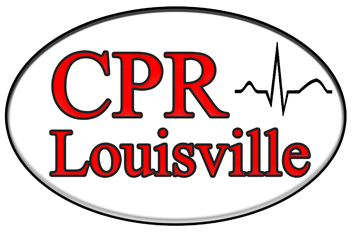UNKNOWN LAB REPORT
Unknown Number 116
Micah Schenck
4/29/2014
BIO: 203.604
Introduction
At the start of this semester in Microbiology we discussed the importance of being able to identify different Bacteria. Antibiotics are extremely important in curing disease, but we need to be more diligent in our efforts in making sure we do not create superbugs from our overprescribing of antibiotics. This is the main reason why the identification of Bacteria in a clinical setting is so important.
Methods and Materials
My instructor started this lab by handing me a tube of two unknown bacteria labeled 116. My first course of action was to separate my two unknown bacteria by making a streak plate. This involved a Bunsen burner, Inoculating loop, and a nutrient agar plate. After sterilizing my inoculating loop a streak plate was made while sterilizing the inoculating loop each time a new streak was made. Three streak plates were made, because of the importance of this step in the process. The plates were incubated at 37 degrees Celsius, and came back in two days to analyze the results. Upon analysis of the first three streak plates, the results were inconclusive. Each plate showed either too much growth or no growth of the bacteria, so again three streak plates were made and incubated at 37 degrees Celsius. After five days of incubation prompted promising growth on one of the streak plates.
The next step was to gram stain the streak plate to see if any isolated bacteria were there. This involved a Bunsen burner, inoculating loop, cloths pin, microscope slide, crystal violet, gram iodine, gram safranin, decolorizer, distilled water, and a microscope. Once the slide was made up the procedure of gram staining had gram negative rods. This result prompted the creation of another streak plate from the bacteria colony used for the gram stain in order to make my pure culture of the gram negative rods. A Mannitol Salt Agar was used to promote growth of gram positive bacteria since the results have yet to produce promising growth. After two days of incubating at 37 degrees Celsius the results were checked. No growth on the Mannitol Salt Agar after having used a lawn technique to cover the MSA Agar plate. Then a to gram stain on the isolation streak plate of the gram negative bacteria, and results showed gram negative rods as well as gram positive rods.
At this time results were presented to the professor and explained the procedures used to get these results. I hypothesized that the original culture tube 116 may not be a great culture to sample from, and gave the gram-positive and gram-negative bacteria already isolated in separate tubes.The gram positive tube was labeled alt 9, and the gram negative tube was labeled alt 3. At this point chemical tests on the unknown bacteria’s were able to be conducted. The first step though was to use a lawn technique on a nutrient agar plate for both the gram negative and gram positive bacteria.
Results
Starting with my gram positive bacteria I started the tests; Glycerol, Maltose, and Casein. Then I moved on to my gram negative testing, which included Indole, Urea, and H2S. I incubated all my tubes at 37 degrees Celsius and waited two days to view my results. Table 1 lists the test, purpose, reagents, and results of the gram positive testing, while table 2 lists the test, purpose, reagents, and results of the gram negative testing.
Table 1. Gram Positive
| Test | Purpose | Reagents | Observations | Results | |||
| Glycerol | To see if the bacteria can ferment Glycerol(Vumicro.com) | none | Tube was magenta color | Negative result | |||
| Maltose | To see if the Bacteria can ferment Maltose as a carbon source(Vumicro.com) | none | Tube had a red color | Negative result | |||
| Casein | Too see if the Bacteria will produce the enzyme caseace. | none | Whit cloudiness cleared around the bacteria | Positive result | |||
| Gram Stain | To determine gram reaction of the bacterium | Crystal violet, Iodine, Alcohol,, Safranin | Purple Rods | Gram positive result | |||
Table 2. Gram Negative
| Test | Purpose | Reagents | Observations | Results |
| Gram stain | To determine gram reaction of the bacterium | Crystal violet, Iodine, Alcohol, Safranin | Pink rods | Gram negative result |
| H2S | To see if the bacteria produce enzyme Thiosulfate Reductase | None | Black color in the tube | Positive result |
| Indole | To see if the bacteria produces Indole from tryptophan(Vumicro.com) | None | Cherry red ring produced at the top of the tube | Positive result |
| Urea | To see if bacteria produces enzyme Urease | None | Blue coloring of the tube | Positive result |
Discussion / Conclusion
Finally after all the tests were interpreted the conclusion was that the gram positive bacteria was Bacillus subtilis, and the gram negative bacteria was Proteus vulgaris. How did these results come to be? The first step was gram staining, which eliminated three gram positive bacteria right away with rod shaped results. The gram negative bacteria was a different story, since all the gram negative bacteria we had to work with were all rid shaped. Once down to two gram positive bacteria tests were completed to eliminate one more. Glycerol, Maltose both came up negative, but had a positive result on Casein. This was a problem and could have been contaminated, while performing the test. Regardless two negative results lead to the belief that the gram positive bacteria was Bacillus subtilis.Now on to the Gram negative results, and since all of them are rod shaped more tests were needed to eliminate possible bacteria’s. The tests Urea, H2S, Indole. The test for Indole came back positive, which eliminated two bacteria’s. Then the Urea test was positive, which eliminated one more. Finally my H2S test came back positive, which left just one. No issues complicated the gram negative conclusion, and the answer was Proteus vulgaris.
Gram Positive Bacteria Bacillus subtilis
Originally named Vibrio subtilis in 1835, this organism was renamed Bacillus subtilis in 1872 (MicroWiki.com). One of the first bacteria to be studied. This bacteria is a prime example for cellular development. Bacillus subtilis is naturally found in soil and vegetation with an optimal growth temperature of 25-35 degrees Celsius. This can cause problems for Bacillus subtilis for the temperatures can drop below 25 degrees Celsius or rise above 35 degrees Celsius. Therefore Bacillus subtilis has evolved to form Endospores to assist its survival in Bacillus subtilis environment. Bacillus subtilis bacteria are non-pathogenic. They can contaminate food, however, though seldom does it result in food poisoning. Currently Bacillus subtilis is being researched for its ability to survive heat, chemical, and radiation(MicroWiki.com). I have no doubt Bacillus subtilis will forever be research for the ability of its strong endospore formation.
References
www.MicroWiki.com
www.Vumicro.com





